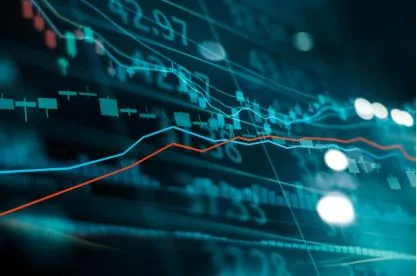Dow Jones Movements: What They Mean for Today’s Investors?
A stock market index like the Dow Jones Industrial Average tracks various blue-chip companies that are trading on the Nasdaq and the NYSE. This was named after Charles Dow, who created the index in 1896, and it often showed the overall health of the US economy. See more about the DJIA when you click here.
For years, the DJIA has remained the most-watched market indicator, where if it shows a weak performance, it can mean a slowing economy and vice versa. As the market changes over time, then so does the composition of the index, where a company may be dropped because it became less relevant to the current trends.
Most of the stocks that sell at higher prices have a greater weight, and mergers had to be accounted for. In the past, companies that sold tobacco, oil, sugar, cotton, and those that are heavily invested in railroads were included, but today, they are primarily made up of tech, e-commerce, banking, and many other corporations.
Even a small movement has captured news headlines because this has influenced investors’ sentiments at a given time. They offer a snapshot of a company’s financials but despite the information that’s often available in public, many people are still unsure about how they are going to fit this data into their investment strategies. Understanding the Dow will often involve tracking more than just the numbers but also recognizing how the figures are related to economic shifts.
The index doesn’t just bring financial news to people, but it actually helps in shaping the market. When the figures rise, there’s optimism in the global market, and when the numbers drop, fear can follow swiftly.
What Influences the Dow’s Performance?
There are various forces that can affect the trajectory of the DJIA, and these include the current government policies that are being implemented around the world. The current interest rates and the quarterly corporate earnings are also going to change the market sentiment. Many of these enterprises are often invested in finance or tech, while others are in healthcare. A single product launch alone can result in a company’s stock to soar or slide, and this can pull the index along.
Economic information may also play a major role where reports on job growth and a country’s GDP that you can see info in this URL: https://education.nationalgeographic.org/resource/gross-domestic-product/ may also trigger a shift. This is because the investors are also adjusting their expectations when it comes to inflation, and even a subtle change can rattle the central banks, and these changes are very unpredictable. Many investors may find it challenging to navigate the volatility of business cycles, especially if they don’t have previous experience with these kinds of investments.
Natural disasters and other global events can also disrupt the supply chain, and this can cause a ripple effect across businesses. Some of the Dow-listed firms have international operations, and when economies falter, the index can react accordingly.
What Can You Do?
Instead of constantly worrying about the market, retirees may want to invest in other alternative assets like gold that they can use as a hedge against inflation. Precious metals are going to provide you with an inflation-proof wealth storage that’s going to move opposite the stocks from the companies listed in Dow Jones.
You can start diversifying your portfolio and have a maximum of 10% gold holdings so you can have stability against economic uncertainties on the horizon. Also, you can have several tax advantages by buying gold and putting it into a retirement account so you can have the potential for long-term growth.
It’s best if you can assess your risk tolerance since this is going to determine the amount of risk that you can take on. When you possess a high tolerance for risks, you can maximize your potential returns by studying the volatility of prices in stocks. There’s also the buy and hold strategy that works well with people who are busy where they can purchase assets that tend to appreciate in value historically.
Compare your investment options with the help of a financial expert and understand the opportunities involved. Fortunately, you can get resources from companies like Goldco that can help you determine whether a precious metals SDIRA will be the right fit for you. If you decide to invest, they will make the entire process of opening a retirement account a hassle-free one, and you can get your hands on those brilliant and glittering gold coins in no time that you can add to your nest egg.
Other Strategies in a Dow-Driven Market
Optimism may be initially high but know that some companies that might have been overvalued because of hype can quickly go down. Others are delivering quiet returns, and this is where you should focus more on the fundamentals and look beyond the surface if you’re choosing where to invest.
During turbulent times, diversification is more important than ever, as it would help you spread your assets across different sectors, so they won’t all go down in value at the same time. Look for other options that are going to balance your portfolio since diversifying doesn’t always guarantee profits.
With the right companies, you can incorporate assets like a gold bar into your retirement and have something tangible that can remain valuable for decades. These precious metals can even be inherited by future generations, and they can prepare you for both bull and bear markets, so you’ll have better peace of mind.
Reading the Dow Without Reacting Emotionally
It’s best to manage your emotions and don’t react when the Dow plunges. Sometimes, fear can result in reckless confidence where you buy high and sell low. This is the opposite of what you want, and understanding the logic behind the natural cycles that the market goes through can help you respond well.
Well-defined investment plans can also give you the roadmap to your goals, even if the road to get there is bumpy. Know your risk tolerance and adjust your portfolio based on the information that you have. Stay invested during the downturns, but make sure to combine it with asset classes that can also fight inflation, so you’ll have a hefty nest egg afterward.






